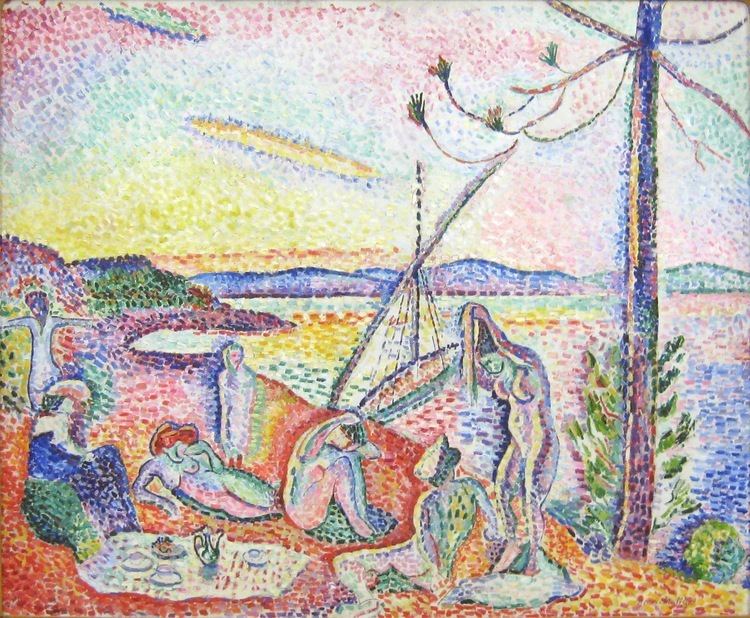Year 1904 Period Pointillism Created 1904 | Medium Oil on canvas Media Oil paint Genre History painting | |
 | ||
Dimensions 98.5 cm × 118.5 cm (37 in × 46 in) Similar Henri Matisse artwork, Artwork at Musée d'Orsay, Oil paintings | ||
Matisse luxe calme et volupt
Luxe, Calme et Volupté is an oil painting by the French artist Henri Matisse. Both foundational in the oeuvre of Matisse and a pivotal work in the history of art, Luxe, Calme et Volupté is considered the starting point of Fauvism.
Contents
- Matisse luxe calme et volupt
- Luxe calme et volupt small watercolors by elizabeth osborne
- Background
- History
- Exhibitions
- References
Luxe calme et volupt small watercolors by elizabeth osborne
Background
Luxe, Calme et Volupté was painted by artist called Matisse in 1904, after a summer spent working in St. Tropez on the French Riviera alongside the neo-Impressionist painters Paul Signac and Henri-Edmond Cross. The painting is Matisse's most important work in which he used the Divisionist technique advocated by Signac, which Matisse had first adopted after reading Signac's essay "D'Eugène Delacroix au Néo-impressionisme" in 1898. Signac purchased the work, which was exhibited in 1905 at the Salon des Indépendants. Matisse abandoned the Divisionist technique the following year and became one of the pioneers of Fauvism.
The painting's title comes from the poem L'Invitation au voyage, from Charles Baudelaire's volume Les Fleurs du mal (The Flowers of Evil):
